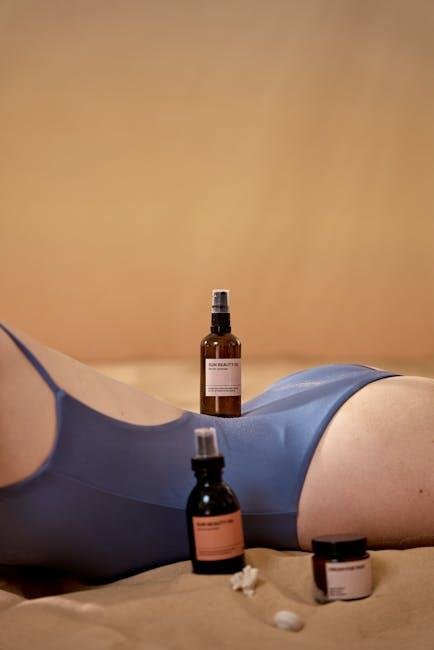When it comes too shielding our skin from the sun’s relentless rays, the world of sunscreen can often feel like navigating a complex maze of ingredients and classifications. Among the myriad options available, two primary types stand out: physical and chemical sunscreens.While both serve the vital purpose of protecting our skin from ultraviolet (UV) radiation, the science behind how they work reveals a fascinating dichotomy. As we bask in the warmth of sunny days, understanding these differences can empower us to make informed choices about our sun protection strategies. This article delves into the intricate mechanics of SPF, exploring the fundamental principles that govern physical and chemical sunscreens, their respective benefits, and the implications for our skin’s health in a sun-drenched world. Join us on this enlightening journey to demystify the science behind SPF and discover what truly lurks beneath the surface of your favorite sunblock.
Understanding SPF: What It Means for Your Skin Health
When it comes to skin health,understanding SPF is essential for making informed choices about sun protection. SPF, or Sun Protection Factor, measures how well a sunscreen can shield your skin from UVB rays, the type of radiation responsible for sunburn and, over time, skin cancer. The number associated with SPF represents the duration of protection it offers. For example, if you typically burn after 10 minutes in the sun, an SPF 30 theoretically allows you to stay in the sun without burning for about 300 minutes — although this is a simplification and can vary widely based on skin type, intensity of sunlight, and submission method.
It’s essential to differentiate between physical and chemical sunscreens for optimal skin health. Physical sunscreens, also known as mineral sunscreens, contain active ingredients like zinc oxide or titanium dioxide that work by reflecting UV rays away from the skin. In contrast, chemical sunscreens contain organic compounds that absorb UV radiation and convert it into heat, which is then released from the skin. When choosing between the two, consider the following factors:
- Skin Sensitivity: Physical sunscreens are often recommended for sensitive skin as they are less likely to cause irritation.
- Protection Spectrum: Check if the sunscreen provides broad-spectrum protection against both UVA and UVB rays.
- Water Resistance: Choose a formula that remains effective even when sweating or swimming.
| Type of Sunscreen | Pros | Cons |
|---|---|---|
| Physical | Immediate protection, less irritation | Can leave a white cast, may feel heavier |
| Chemical | lightweight feel, blends easily | Need time to absorb, potential for irritation |

The Mechanisms of Physical Sunscreens: A Shield Against UV Rays
Physical sunscreens, frequently enough referred to as mineral sunscreens, primarily contain active mineral ingredients like zinc oxide and titanium dioxide. These compounds work by scattering and reflecting UV rays away from the skin, acting as a protective barrier. Unlike their chemical counterparts,which absorb UV radiation and convert it into heat,physical sunscreens provide an immediate layer of protection upon application. This inherent shielding mechanism means that users can achieve effective sun protection right after application, making them particularly suitable for individuals with sensitive skin or those seeking to minimize irritation.
A key advantage of physical sunscreens is their stability under sunlight exposure. They do not break down as easily as chemical filters, which can lose efficacy after prolonged sun exposure. In addition to their UV protection, physical sunscreens frequently enough boast environmental benefits, as they are less likely to harm marine life compared to many chemical sunscreens. Here’s a quick comparison of the primary attributes of physical versus chemical sunscreens:
| Factor | Physical Sunscreens | Chemical Sunscreens |
|---|---|---|
| Active Ingredients | Mineral (Zinc Oxide, Titanium Dioxide) | Chemical (Avobenzone, Oxybenzone) |
| Mechanism | Reflects and scatters UV rays | Absorbs UV radiation |
| Stability | Highly stable in sunlight | Can degrade with sun exposure |
| Skin Sensitivity | Less irritating for sensitive skin | May cause irritation in some |

exploring Chemical Sunscreens: Absorption and Protection Explained
Chemical sunscreens operate on a fascinating principle: they absorb UV radiation and convert it into heat, which is then released from the skin. This process is facilitated by specific compounds, primarily organic molecules, that work at a cellular level. These compounds, such as avobenzone, octisalate, and octocrylene, play a crucial role in providing effective sun protection. Unlike physical sunscreens that create a barrier on the skin’s surface,chemical formulations usually have a lighter feel and can blend readily into the skin,making them popular choices for daily wear.
to understand their effectiveness, let’s break down the mechanism of protection these products provide. Chemical sunscreens are designed to address different ranges of UV radiation, mainly UVA and UVB rays. Each sunscreen has a specific absorption spectrum, which determines what wavelengths it can neutralize. here’s a straightforward table summarizing the key active ingredients and their absorption capabilities:
| active Ingredient | UV Protection Type | Absorption Range (nm) |
|---|---|---|
| Avobenzone | UVA | 320-400 |
| Octinoxate | UVB | 280-320 |
| Octisalate | UVB | 290-320 |
| Octocrylene | UVA/UVB | 260-320 |
The combination of these filters ensures broader-spectrum protection, allowing consumers to choose products tailored to their specific sun exposure needs. Understanding these principles helps in selecting the right sunscreen for individual skin types and lifestyle, enhancing not just sun protection but overall skin health.

Choosing the Right Sunscreen for You: Tips for Optimal Skin Care
When it comes to selecting the perfect sunscreen for your skin, understanding the difference between physical and chemical formulas is essential. Physical sunscreen contains active mineral ingredients like zinc oxide or titanium dioxide, which sit on top of the skin and deflect UV rays. This type is excellent for sensitive skin, providing immediate protection upon application and often being water-resistant. In contrast, chemical sunscreen absorbs UV radiation through its active ingredients such as oxybenzone or avobenzone and may take about 20 minutes to become effective. While they tend to have a lighter feel and frequently enough blend more seamlessly into the skin, they can sometimes irritate sensitive skin types.
To further assist you in making an informed decision,consider the following tips while choosing your sunscreen:
- Skin Type: Identify whether your skin is dry,oily,or combination,and choose a formula that aligns with your needs.
- SPF Level: Opt for a broad-spectrum coverage with at least SPF 30 for daily use.
- Water Resistance: If you plan to swim or sweat, look for water-resistant options that maintain protection for up to 80 minutes.
- Ingredient Check: Look for added benefits like antioxidants or ingredients that promote hydration.
Each sunscreen has its own unique characteristics that may work better for different individuals. To help you see the comparison more clearly, here’s a brief overview:
| Feature | Physical Sunscreen | chemical Sunscreen |
|---|---|---|
| Application Time | Immediate | 20 minutes |
| Skin Type Suitability | Sensitive skin | Normal/Combination Skin |
| Longevity | More durable in water | Reapply after swimming |
| Environmental Impact | Less harmful to coral reefs | Can contain harmful chemicals |
Concluding Remarks
understanding the science behind SPF—whether it be physical or chemical—empowers us to make informed choices for our skin’s protection. Both types of sunscreens offer their own unique advantages,and their effectiveness ultimately hinges on personal preference,skin type,and specific activities. As we navigate the sun-soaked days ahead,it’s essential to choose wisely,applying sunscreen judiciously to shield ourselves from harmful UV rays while still enjoying the warmth of the sun. Remember, knowledge is not just power; it’s a pathway to radiant and healthy skin that can bask in the sunlight with confidence. So, as you step outdoors, take a moment to reflect on your choice of SPF—it’s not just a decision; it’s an investment in your skin’s future. Stay safe, stay sun-smart, and let science guide your way.

